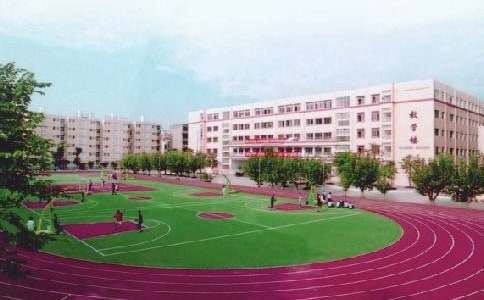國際英語資訊:Feature: Oldest house in Athens gives glimpse of life some 500 years ago

ATHENS, March 1 -- In the heart of the historic center of this capital city under Acropolis Hill, a mansion transformed into a unique museum stands out for its history, architecture and religious significance for Orthodox Christian worshippers.
Behind a tall stone fence in the bustling neighborhood of Plaka, is the Benizelos mansion named after its first owner Angelos Benizelos. Benizelos was the descendant of an aristocratic family and father of Saint Filothei, considered a Patron of the city of Athens,
The monument features remnants of structures erected in the 16th century.
It was reconstructed in the late 17th and early 18th century, but was abandoned for years in the 19th century. It has undergone extensive restoration during the past 15 years.
The Benizelos mansion is the only example of such houses preserved in southern Greece today, providing testimony to life in Athens during the years of the Ottoman occupation.
Various travelers referred to the house in their journals or depicted it in their sketches and paintings.
The building was taken over by the ministry of culture in 1972, and it has been run by the Archdiocese of Athens since 1999.
After being restored using European Union (EU) funds, the mansion was turned into a museum and opened its doors to the public in February 2024.
The restoration of the monument focused on highlighting the original morphological elements and the character of a pre-revolutionary noble urban house.
"The house of the Benizelos family is the last surviving konaki in Athens. Its perfect form is due to the cooperation of the Ministry of Culture, the Archdiocese of Athens and the National Polytechnic of Athens," management consultant George Theodoropoulos told Xinhua.
"The mansion's upper story is a typical example of the 18th century architecture, the konaki, as it is called, it is the house of the urban nobles that dominated during the Ottoman Empire," he added.
Constructed mainly of wood, the upper story is the main living space. The visitor can see two symmetrically rooms which were used for all daily activities, the ontas, as it is called.
Their flexible furnishings and internal arrangement could be rearranged to meet different needs over the course of the day.
"A characteristic of this room is the flexibility in function of the household equipment. Someone in vain would look for beds, table, and chairs. This room was used differently during the day. The bedding that was used for sleeping was removed in the morning," Theodoropoulos said.
For example, the sofas were used as seats but also as beds, while the large copper trays also served as tables.
Another basic element is the open passageway towards the rooms, with sitting rooms and sofas which is called the hayiati.
The careful woodwork and the examples of decorative woodcarvings found in the upper story are common in the houses of that period.
With its large windows, skylights and semi-enclosed spaces, the building is quite representative of aristocratic architecture during the Ottoman Empire.
The stone-built ground floor is comprised of three closed rooms and the portico.
According to Theodoropoulos, the Benizelos family situated the auxiliary functions of the house and installations relating to economic activities on the ground floor.
The rooms of the ground floor, the Late Roman wall, as well as the arcade of the portico supported by slender monolithic marble columns and decorated with leaves preserve evidence of the construction history of the mansion.
"In the court we can see the late Roman wall from the 3rd century A.C., the ground floor was made from stone in the 16th century," Theodoropoulos stated.
The Benizelos mansion has attracted thousands of visitors from across the country and abroad. But, also, a numerous musical and theatrical events have been hosted in the two yards of the buildings, academics lectures and book presentations in the upper floor.
For 2024, the museum will collaborate with the Athens Festival to hold musical performances at the beautiful portico.
Walking around the museum the visitor can learn more about the building's history through its interactive digital applications like visual material, video projections, audio applications and digital interactive exhibits.
"We made good use of the new technologies, there are videos in the ground floor and in the upper story in Greek and in English for the visitor to watch and learn about the history of that era," Theodoropoulos said.
The museum is friendly also to people with accessibility and special needs.
"There is a lift for people with mobility problems and there is information in Braille for people who have vision problems," he added.
For Theodoropoulos, in the museum, visitors can explore the different rooms and floors and learn about an interesting period of Greek history, which is unknown to many.
"It's a monument, a mansion that the visitor can discover by his own. He can tour himself in the storage rooms. He can see the system of wine presses and containers for the must and the large storage of grains, oil and wine, the most beautiful yard in Athens with the well dominating in the middle of the court. The finest arcade of the portico and the upper story constructed by wood which was the typical konaki of that period," he added.
ATHENS, March 1 -- In the heart of the historic center of this capital city under Acropolis Hill, a mansion transformed into a unique museum stands out for its history, architecture and religious significance for Orthodox Christian worshippers.
Behind a tall stone fence in the bustling neighborhood of Plaka, is the Benizelos mansion named after its first owner Angelos Benizelos. Benizelos was the descendant of an aristocratic family and father of Saint Filothei, considered a Patron of the city of Athens,
The monument features remnants of structures erected in the 16th century.
It was reconstructed in the late 17th and early 18th century, but was abandoned for years in the 19th century. It has undergone extensive restoration during the past 15 years.
The Benizelos mansion is the only example of such houses preserved in southern Greece today, providing testimony to life in Athens during the years of the Ottoman occupation.
Various travelers referred to the house in their journals or depicted it in their sketches and paintings.
The building was taken over by the ministry of culture in 1972, and it has been run by the Archdiocese of Athens since 1999.
After being restored using European Union (EU) funds, the mansion was turned into a museum and opened its doors to the public in February 2024.
The restoration of the monument focused on highlighting the original morphological elements and the character of a pre-revolutionary noble urban house.
"The house of the Benizelos family is the last surviving konaki in Athens. Its perfect form is due to the cooperation of the Ministry of Culture, the Archdiocese of Athens and the National Polytechnic of Athens," management consultant George Theodoropoulos told Xinhua.
"The mansion's upper story is a typical example of the 18th century architecture, the konaki, as it is called, it is the house of the urban nobles that dominated during the Ottoman Empire," he added.
Constructed mainly of wood, the upper story is the main living space. The visitor can see two symmetrically rooms which were used for all daily activities, the ontas, as it is called.
Their flexible furnishings and internal arrangement could be rearranged to meet different needs over the course of the day.
"A characteristic of this room is the flexibility in function of the household equipment. Someone in vain would look for beds, table, and chairs. This room was used differently during the day. The bedding that was used for sleeping was removed in the morning," Theodoropoulos said.
For example, the sofas were used as seats but also as beds, while the large copper trays also served as tables.
Another basic element is the open passageway towards the rooms, with sitting rooms and sofas which is called the hayiati.
The careful woodwork and the examples of decorative woodcarvings found in the upper story are common in the houses of that period.
With its large windows, skylights and semi-enclosed spaces, the building is quite representative of aristocratic architecture during the Ottoman Empire.
The stone-built ground floor is comprised of three closed rooms and the portico.
According to Theodoropoulos, the Benizelos family situated the auxiliary functions of the house and installations relating to economic activities on the ground floor.
The rooms of the ground floor, the Late Roman wall, as well as the arcade of the portico supported by slender monolithic marble columns and decorated with leaves preserve evidence of the construction history of the mansion.
"In the court we can see the late Roman wall from the 3rd century A.C., the ground floor was made from stone in the 16th century," Theodoropoulos stated.
The Benizelos mansion has attracted thousands of visitors from across the country and abroad. But, also, a numerous musical and theatrical events have been hosted in the two yards of the buildings, academics lectures and book presentations in the upper floor.
For 2024, the museum will collaborate with the Athens Festival to hold musical performances at the beautiful portico.
Walking around the museum the visitor can learn more about the building's history through its interactive digital applications like visual material, video projections, audio applications and digital interactive exhibits.
"We made good use of the new technologies, there are videos in the ground floor and in the upper story in Greek and in English for the visitor to watch and learn about the history of that era," Theodoropoulos said.
The museum is friendly also to people with accessibility and special needs.
"There is a lift for people with mobility problems and there is information in Braille for people who have vision problems," he added.
For Theodoropoulos, in the museum, visitors can explore the different rooms and floors and learn about an interesting period of Greek history, which is unknown to many.
"It's a monument, a mansion that the visitor can discover by his own. He can tour himself in the storage rooms. He can see the system of wine presses and containers for the must and the large storage of grains, oil and wine, the most beautiful yard in Athens with the well dominating in the middle of the court. The finest arcade of the portico and the upper story constructed by wood which was the typical konaki of that period," he added.









